EATING / DRINKING
Street Food
My first night in Seoul I headed out to the night market and was dazzled by the endless lanes and captivated by the different street food stalls. If you love street food and aren't afraid of experimenting then I highly recommend it as there are so many tasty things on offer…
- Tteokboki: spicy rice cake noodles with fish cake – a favorite Korean dish. Tteokboki is the Korean equivalent to crisps / French fries. There are lots of variations and toppings.
- Rolls of Sausage & Tteokboki
- Dried squids and fish: charcoal BBQd seafood was everywhere
- Grilled octopus legs: charcoal grilled and chopped into ‘chips’ for easy snacking
- Smoked cuttlefish: dried, smoked and seasoned to make it sweet
- Tornado potato: a whole potato cut into a spiral using a special slicer, fried and coated in salt or cheese…
- Fried snacks: these can be anything dipped in a batter, including dumplings, eggs, peppers, sweet potatoes etc…
- Bbokki / Dalgona: a simple snack candy made from just sugar and baking soda. It also doubles up as a game – the cookie has a shape in the middle and if you can get it out of the lollipop textured honeycomb without breaking it, you get it for free!
- Various meats-on-a-stick
- Steamed / roasted foods: whilst nuts, chestnuts, corn etc isn’t Korean-specific, it is a very old-school Korean street snack
- Kimbap: rice rolls stuffed with cucumber, crab, turnip and wrapped in seaweed with some roasted sesame oil. A variation is ‘Mayak Kimbap’ with is more cigarette sized and eaten with a toothpick. Mayak means addictive!
- Various colorful fruit / fruit juice stalls
- Egg Balls: a light, sweet waffle style dessert molded into a honeycomb shape…does not contain egg!
- Hotteok: one of Korea’s most famous street snacks. This dessert pancake is made from leavened dough, stuffed with sweeteners like honey and sugar. It is fried on a griddle until a caramel forms in the middle. There was always a queue for these delicious treats, but watch out because they are HOT! There are also veggie versions.
- Pig feet…
- Gul Tare (Dragon Beard Candy): a former royal dessert of kings. Seeing my interest, the guys running the stall did a great show of showing how they transform a hard block of honey, dust it with corn starch, then stretch it into 16,000 strings before stuffing it with chocolate and/or nuts. Check out this video
- Egg bread: sweetened dough topped with an egg and baked
- Waffles: the Korean version is very thin and crunchy and topped with your choice of whipped cream, chocolate and fruit spreads.
Fish Market
Another massive highlight was the Noryangjin Wholesale Fish Market in Dongjak-gu.
If you like fish (and aren’t squeamish) then I absolutely recommend visiting this place. It’s a little out the city, but a local colleague took me. Whilst you can go by yourself, unless you speak Korean it might be a little confusing as it’s not a touristy place at all and no-one spoke English. But to me that just added to the experience. It was essentially a fish wholesalers market…the endless warehouse was full of stalls offering every kind of fish and shellfish I’ve ever seen – and so much more!
 |
| Weighing dinner |
Before our freshly chopped and still wriggling octopuses were put in front of us. This is a Korean delicacy and my companion was delighted that I had no hesitations about trying it. Unfortunately the octopus had other ideas – it was wriggling around and still using it’s suckers to stick to the plate so put up a bit of a fight against my chopsticks!!
The ‘piece-de-resistance’ however, was our fish arrival – the freshest sashimi I will probably ever eat!
Koreans can drink! This genuinely surprised me but it definitely made for a good time.
I visited a few restaurants during my 1 week visit and was always delighted with the food on offer. Main food-styles are:
Noodles
I went to a Lonely Planet recommended place for dinner on my first night: Myeong-dong Gyoja - a very popular place with its famous dish of “kalguksu” (knife-cut, handmade noodles in a meat, dumpling and vegetable broth). There are only 4 dishes on the menu, making choosing a relatively straightforward affair! Offered are mandu (dumplings), bibim guksu (noodles with vegetables and red hot pepper paste), kalguksu and kongguksu (noodles in cold soy milk broth). I went for the famous kalgusku.
The restaurant is ‘no frills’. You grab a seat (after usually queuing up for some time), tick your order on the menu and hand it to the wait staff. You find your cutlery in the drawer under your table.
Bibimbap
This is a signature Korean dish, literally meaning ‘mixed’ rice. I decided to go to Mokmyeoksanbang in Namsan Park for mine . This is a special traditional house built by the government to promote the beauty of Korean culture in a restaurant selling authentic Korean food.
You enter the wooden building, remove your shoes and then place your order at the till before settling into the floor.
You are given a buzzer so you know when your food is ready.
It is a delicious bowl of warm white rice, namul (sautéed and seasoned vegetables) accompanied by your meat (I went for beef) and gochujang (chili pepper paste), soy sauce or doenjang (bean paste).
I love the presentation of Korean food – all the interesting items to add to your dish, changing the tastes as you go.
A local showed me how to mix it all together thoroughly before eating.

Korean BBQ (“Gogigui”)
The name of this food literally means “roasting meat” and is a very popular Korean dish. I went with some local colleagues to a place in Gangnam, possibly the most famous district in Korea.
Often this type of food is prepared at your table on gas / charcoal grills that are built into the table with large extractor pipes above.
We had a mixture of bulgogi (thick slices of beef sirloin / tenderloin marinated in a mixture of soy sauce, sugar, sesame oil, garlic and pepper) and chadolbegi (non-marienated thinly sliced beef brisket which cooks almost instantly).
We also had a huge assortment of side dishes, including pajori (green onion salad), lettuce and ssamjang (a spicy paste made of doenjang, red bean paste, mixed with gochujang, red chili sauce).
The restaurant is ‘no frills’. You grab a seat (after usually queuing up for some time), tick your order on the menu and hand it to the wait staff. You find your cutlery in the drawer under your table.
This is a signature Korean dish, literally meaning ‘mixed’ rice. I decided to go to Mokmyeoksanbang in Namsan Park for mine . This is a special traditional house built by the government to promote the beauty of Korean culture in a restaurant selling authentic Korean food.
It is a delicious bowl of warm white rice, namul (sautéed and seasoned vegetables) accompanied by your meat (I went for beef) and gochujang (chili pepper paste), soy sauce or doenjang (bean paste).
I love the presentation of Korean food – all the interesting items to add to your dish, changing the tastes as you go.
A local showed me how to mix it all together thoroughly before eating.

The name of this food literally means “roasting meat” and is a very popular Korean dish. I went with some local colleagues to a place in Gangnam, possibly the most famous district in Korea.
We had a mixture of bulgogi (thick slices of beef sirloin / tenderloin marinated in a mixture of soy sauce, sugar, sesame oil, garlic and pepper) and chadolbegi (non-marienated thinly sliced beef brisket which cooks almost instantly).
We also had a huge assortment of side dishes, including pajori (green onion salad), lettuce and ssamjang (a spicy paste made of doenjang, red bean paste, mixed with gochujang, red chili sauce).










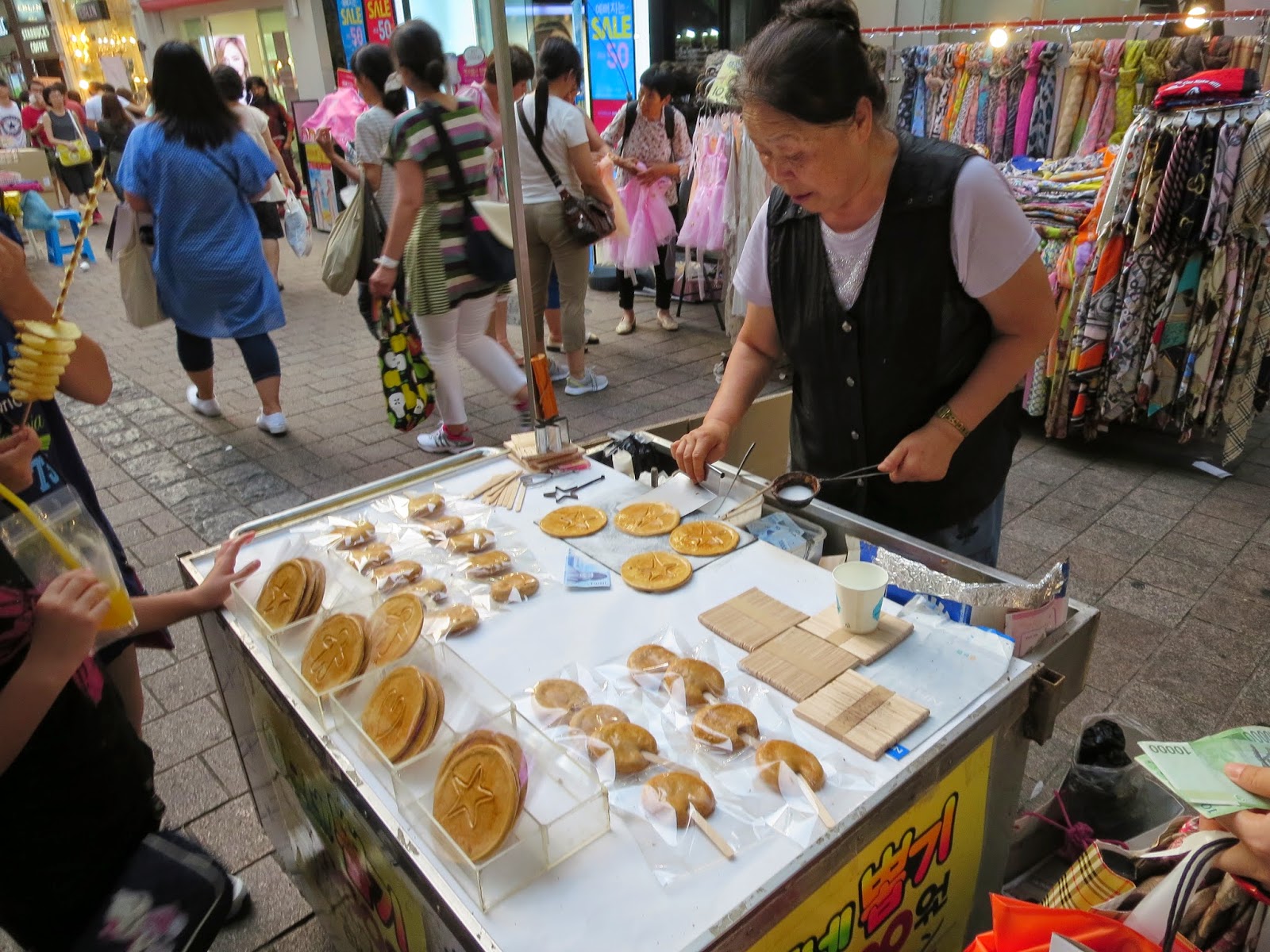
















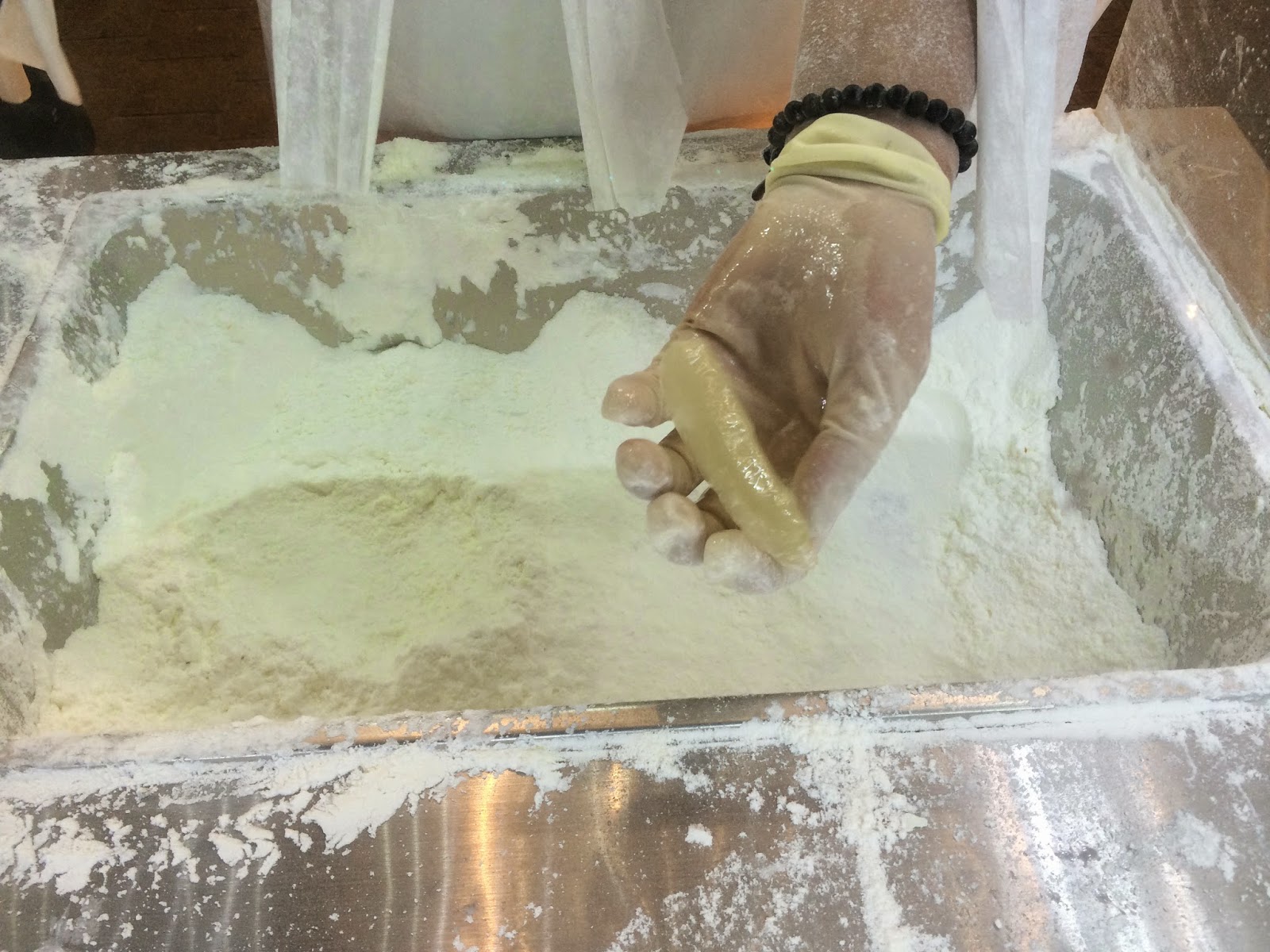











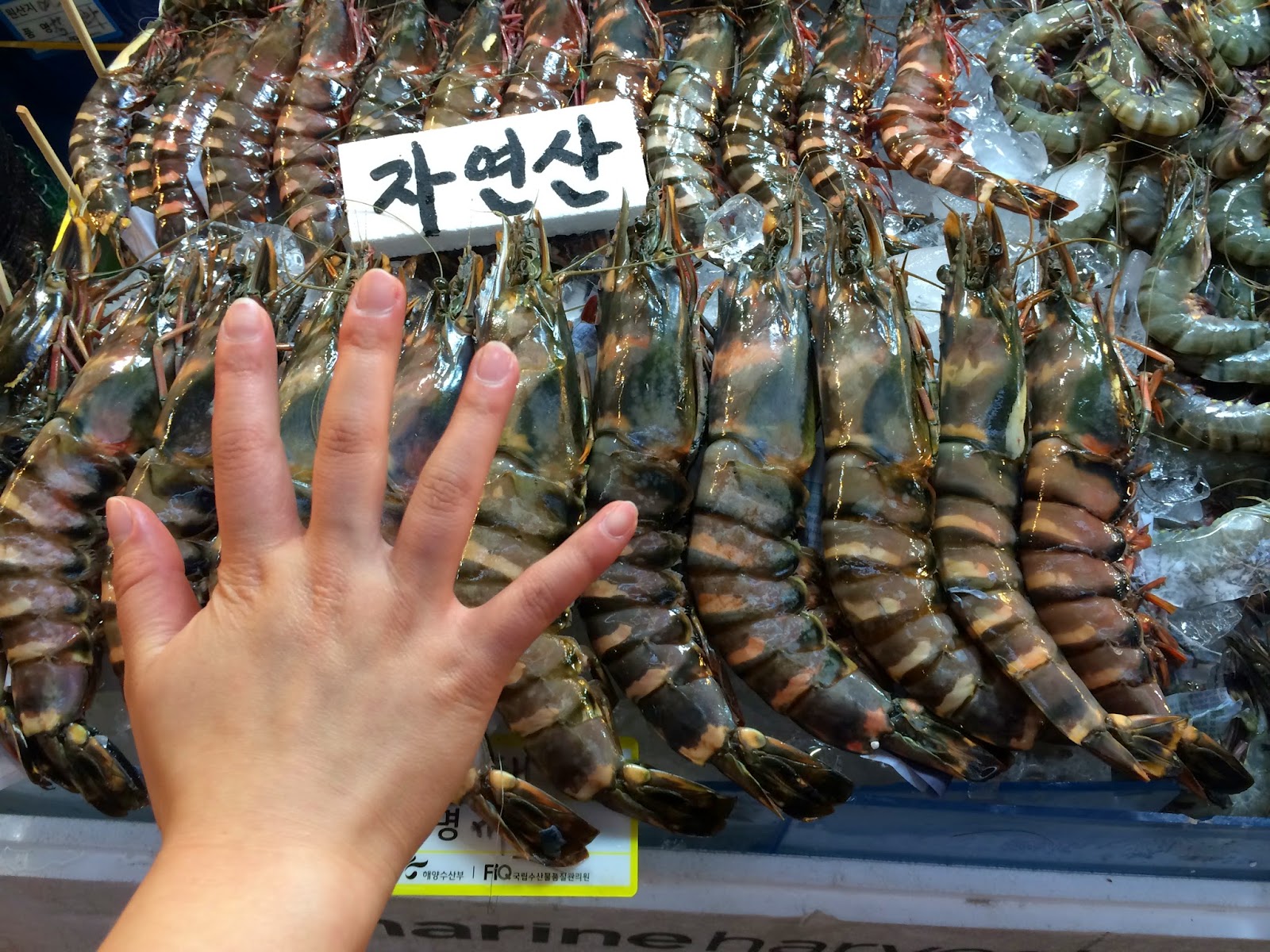










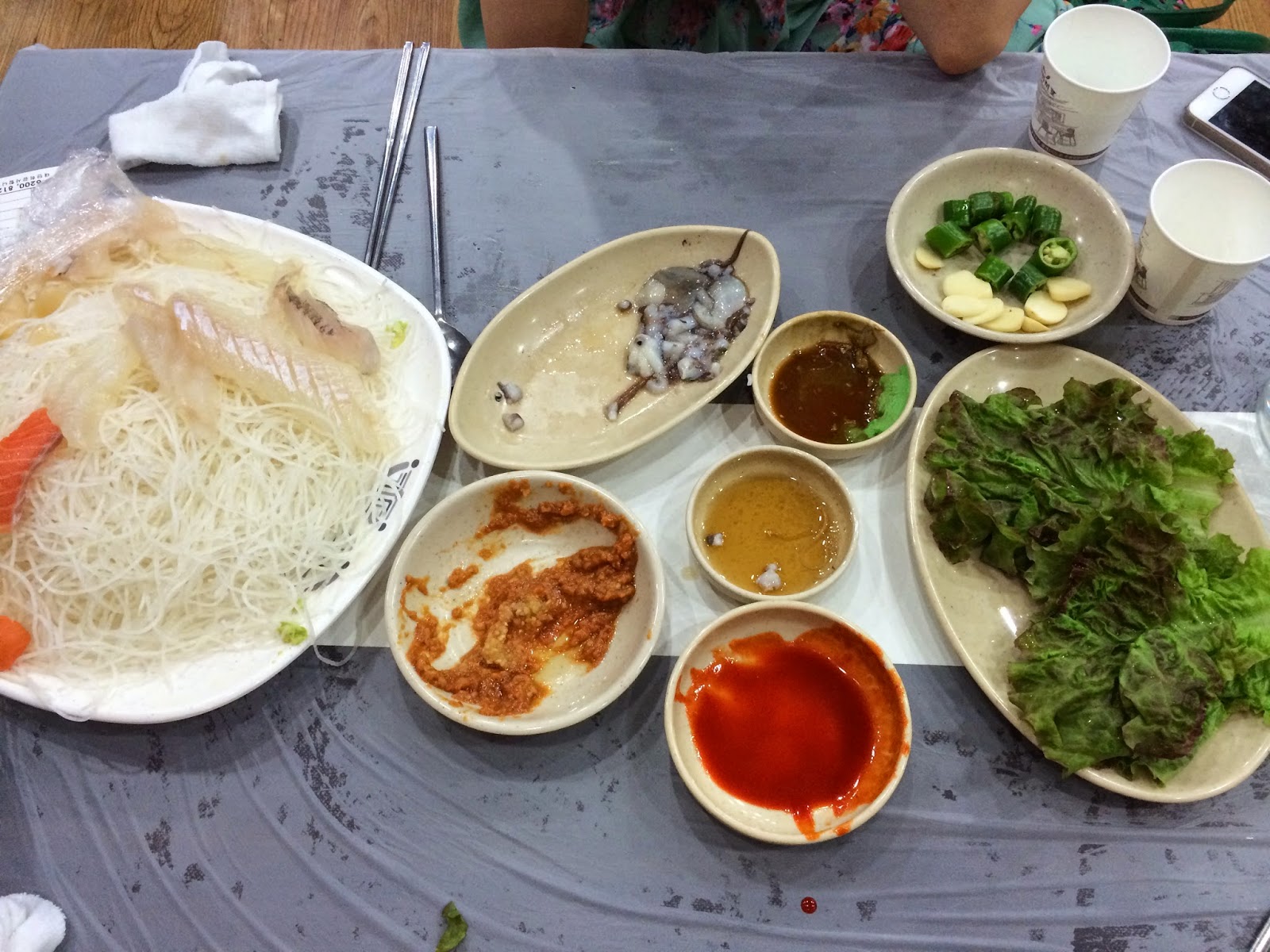


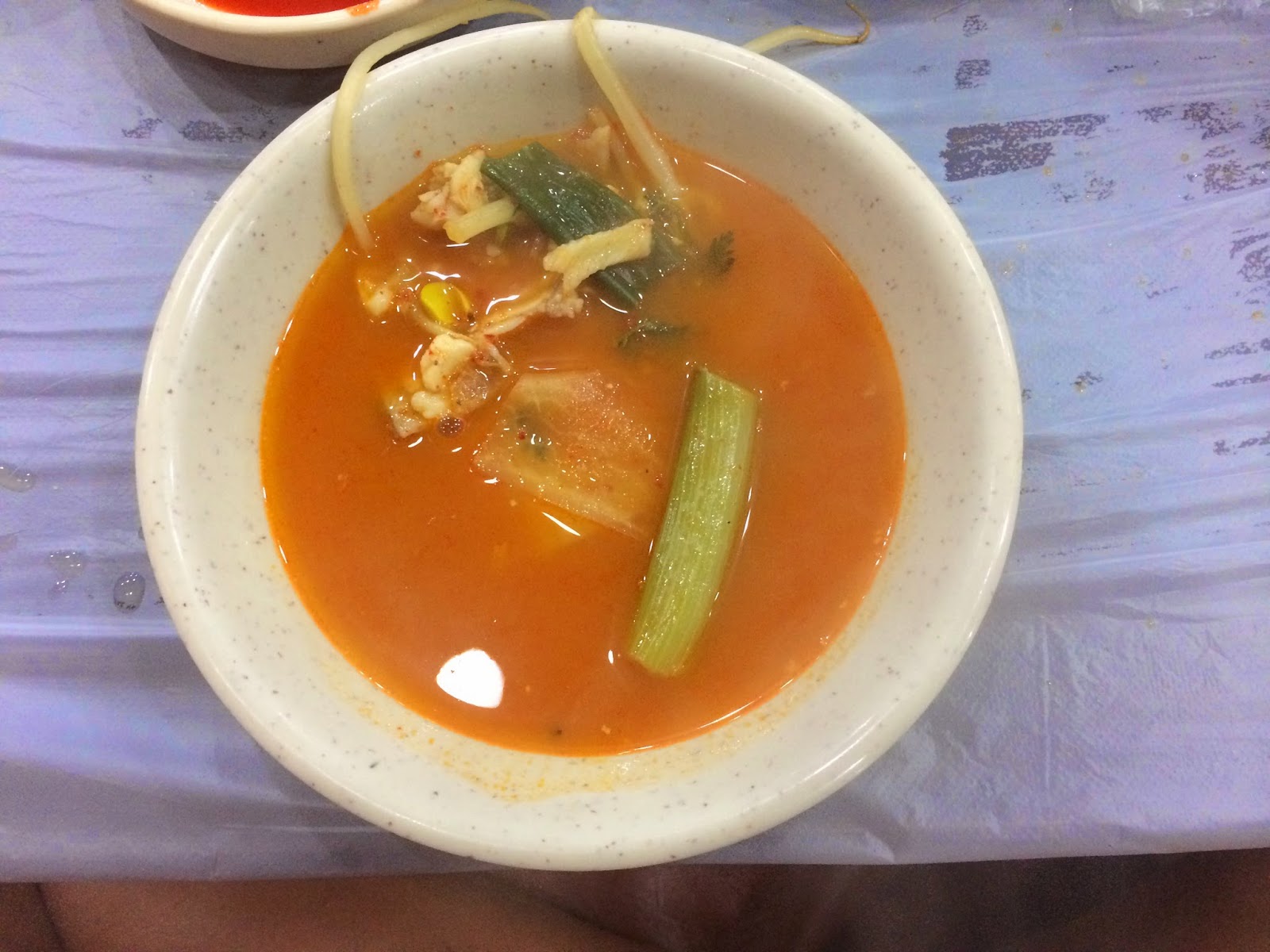


















I love this! I lived in Korea from 2011-2012, and I miss street food so much. The "dessert pancake" is called hotteok, and I love the savory version with noodles inside.
ReplyDeleteAh so lucky - I'd love to live there...though I'd probably end up the size of a house with all the tasty food on offer!
ReplyDelete